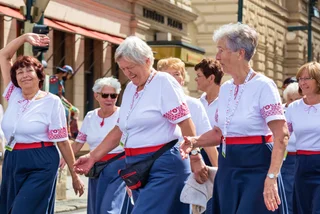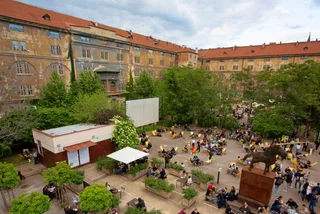Czechia’s population is aging at a steady pace, with senior citizens now outnumbering children under 15 by roughly one-third. Last year, there were almost 2.3 million people over 65 compared with just under 1.7 million children under 15, continuing a trend that began more than a decade ago.
The shift marks a significant demographic milestone. In 2005, children still outnumbered seniors, but by 2007 the balance tipped, and the older population has continued to grow steadily since. Experts warn that the aging trend is likely to accelerate in the coming decades due to low birth rates and longer life expectancy.
PARTNER ARTICLE
This demographic change has implications across Czechia, influencing healthcare planning, pension systems, and regional policy decisions. Differences in life expectancy across regions also highlight inequalities that could affect future social services.
Rising ages index signal long-term demographic shift
The Czech Republic’s old age index, which measures the number of people aged 65 and older per 100 children under 15, reached 133 last year. This means there are roughly 33 percent more seniors than children, up from 29 percent in 2018 and 22 percent in 2017.
Statisticians note that this ratio has been steadily rising since the mid-1980s and is projected to continue growing. The number of seniors first outpaced children in 2007, indicating a rapidly aging population over the past two decades.
Regional differences are pronounced. The Central Bohemia Region has the most balanced ratio, with 109 seniors per 100 children, followed by Prague with about 120.
By contrast, the Karlovy Vary Region recorded 152 seniors per 100 children, with Hradec Králové and Zlín also above 150. These variations will influence local planning for healthcare, social care, and infrastructure for aging populations.
Experts predict that the index could eventually peak in 2063, reaching 277 seniors per 100 children. Such a scenario would mean more than twice as many older adults as children, reflecting a long-term demographic transformation that will affect Czech society for decades.
Life expectancy rises, but regional gaps remain
Life expectancy in Czechia has recovered after a temporary decline during the Covid pandemic. Last year, women aged 65 could expect to live 20.8 more years on average, while men of the same age had an additional 17 years.
Prague recorded the highest life expectancy after the age of 65: 21.6 years for women and 17.9 for men. The Usti nad Labem Region had the shortest, with 19.1 years for women and 15.5 for men.
These differences underscore regional disparities in health outcomes. For instance, a 65-year-old woman in Prague can expect to live six years longer than a man of the same age in Usti nad Labem. Policymakers note that these gaps must be considered in designing healthcare services, retirement planning, and social programs for aging populations.
Long-term demographic trends combined with life expectancy improvements suggest that Czechia will continue to experience significant aging pressures. Full details about age statistics in the Czech Republic can be found from the Czech Statistical Office.












 Reading time: 2 minutes
Reading time: 2 minutes 




























